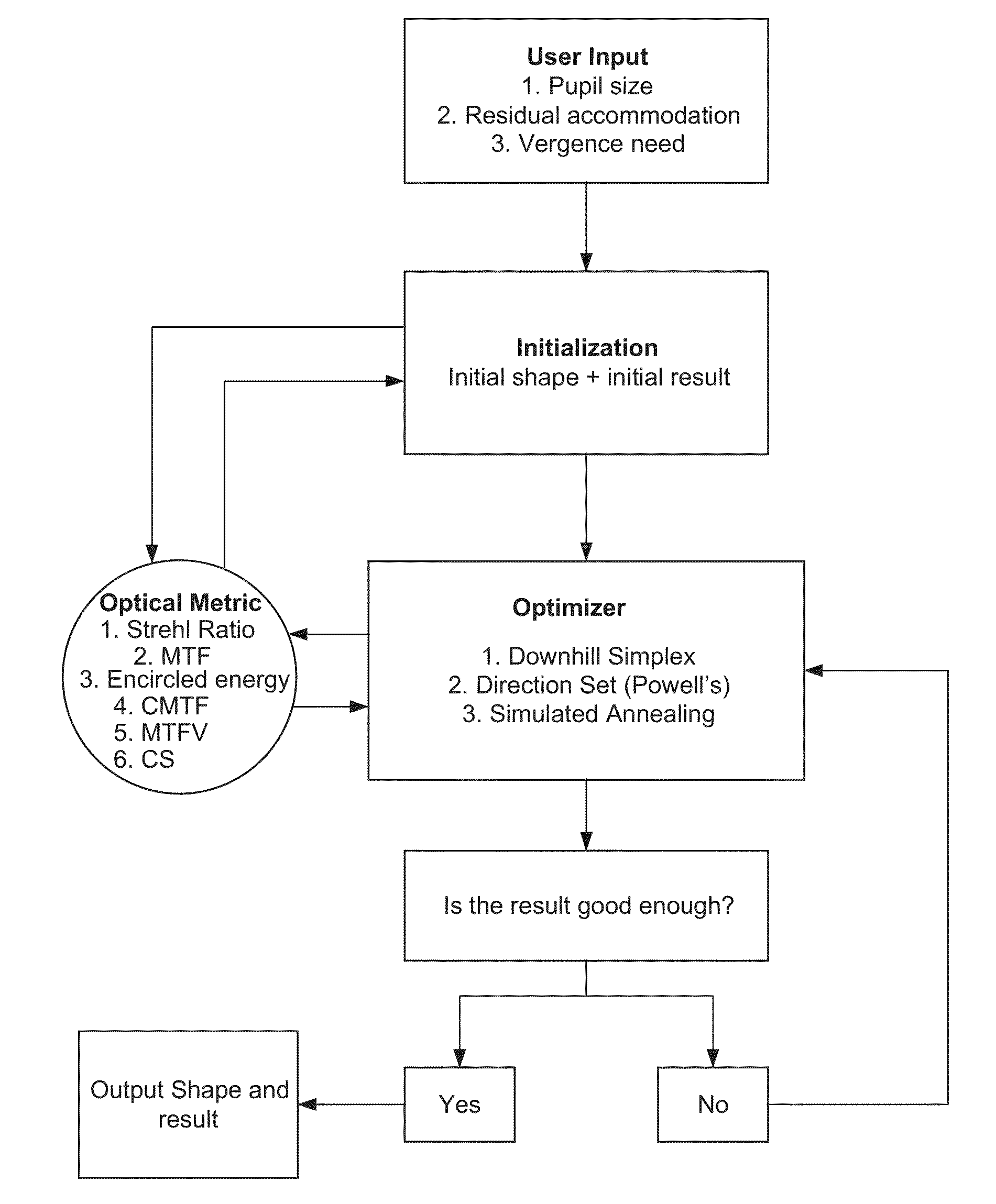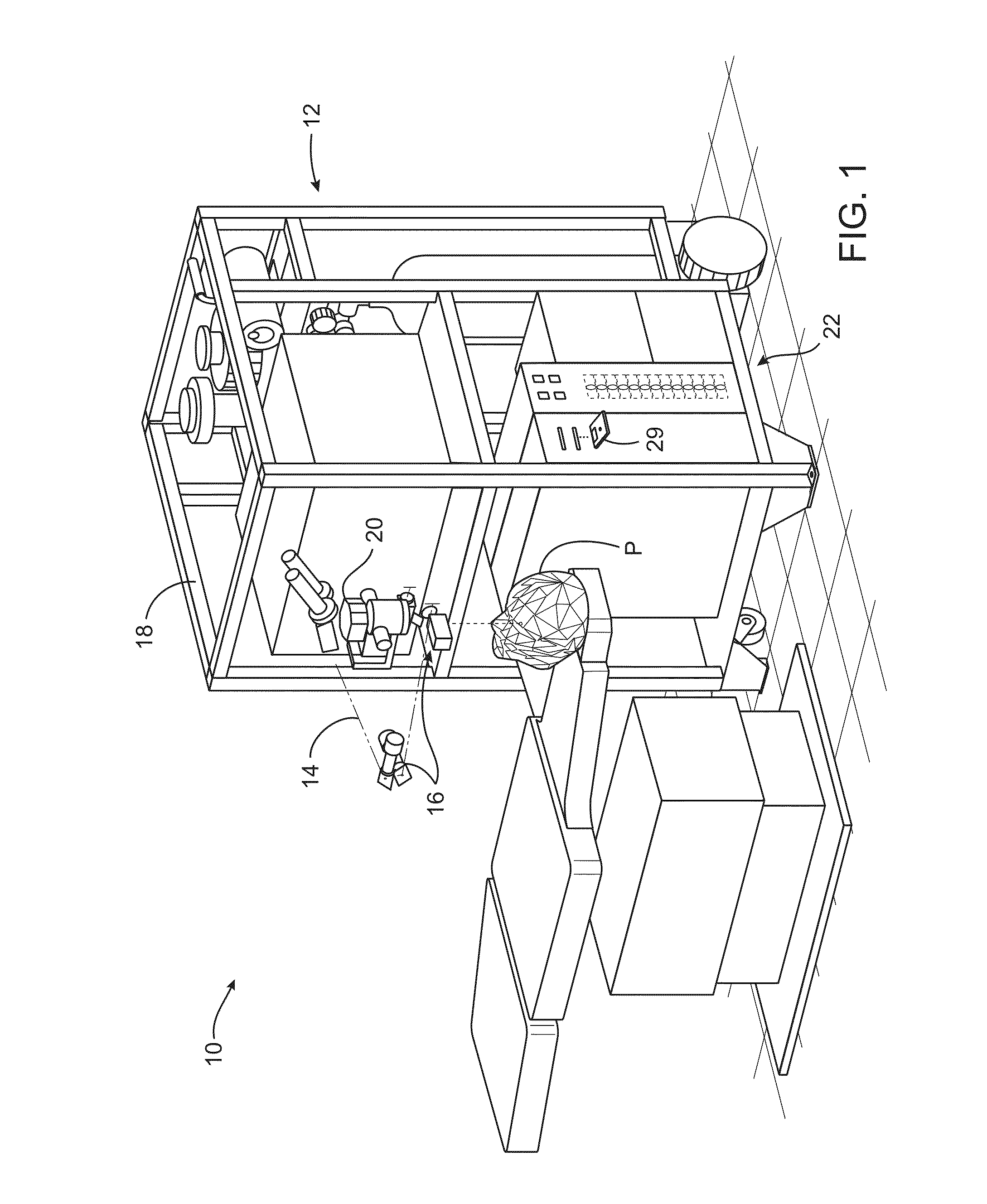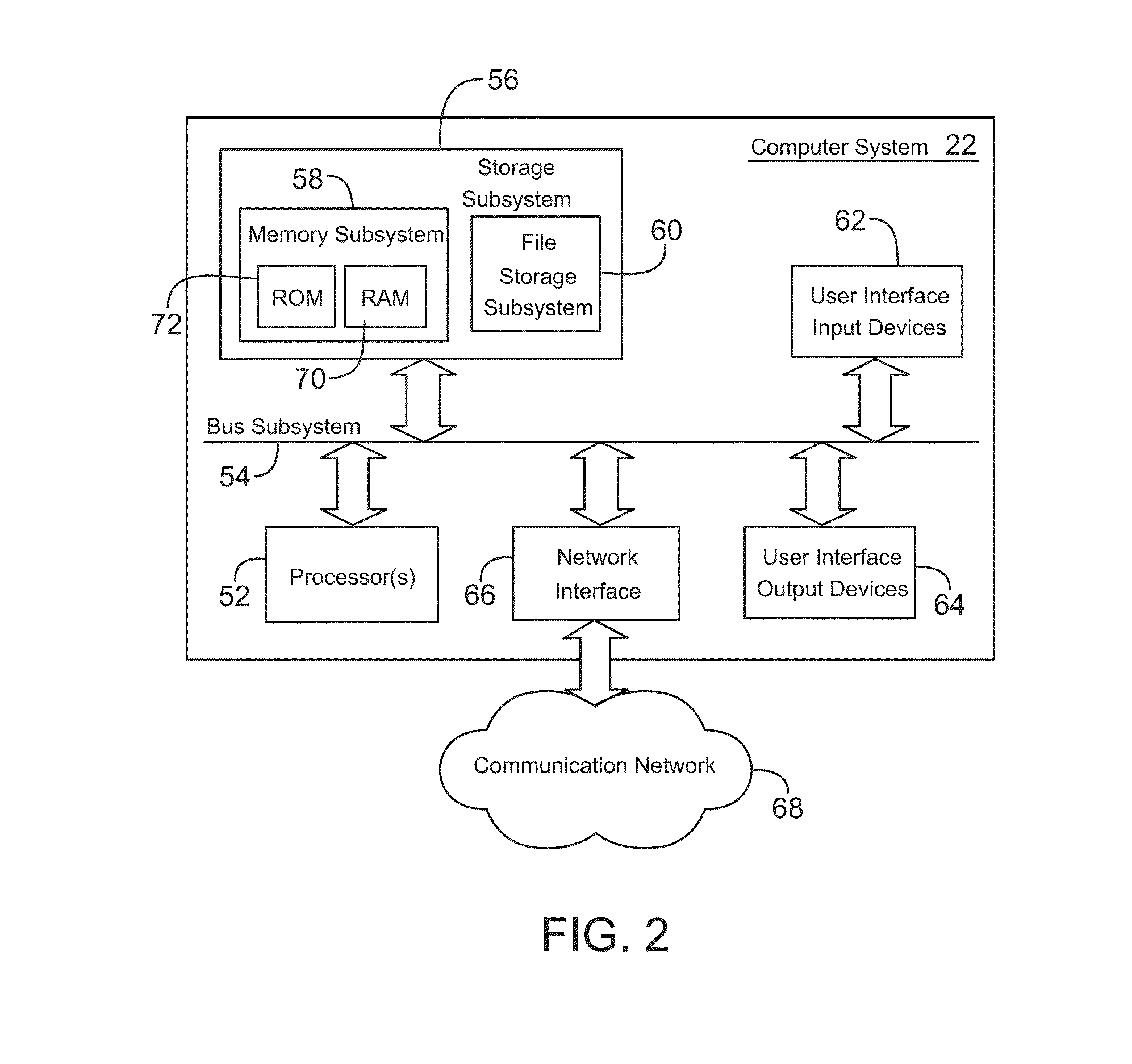Vergence weighting systems and methods for treatment of presbyopia and other vision conditions
a weighting system and weighting technology, applied in the field of goal functions or visual function diagnostic metrics, can solve the problems of loss of ability to focus on objects at near distances, limited ability to change shape, and loss of elastic properties of crystalline lenses,
- Summary
- Abstract
- Description
- Claims
- Application Information
AI Technical Summary
Benefits of technology
Problems solved by technology
Method used
Image
Examples
Embodiment Construction
[0081]Although the methods, devices, and systems of the present invention are described primarily in the context of a laser eye surgery system, it should be understood that the techniques of the present invention may be adapted for use in other eye treatment procedures and systems such as contact lenses, intra-ocular lenses, radial keratotomy, collagenous corneal tissue thermal remodeling, removable corneal lens structures, glass spectacles, corneal ring implants, and the like.
[0082]Exemplary systems and methods disclosed herein can be implemented via a variety of ophthalmic devices or solutions. For example, treatment techniques may be used for any of a variety of surgery modalities, including excimer laser surgery, femtosecond surgery, and the like. A variety of forms of lasers and laser energy can be used to effect a correction or treatment, including infrared lasers, ultraviolet lasers, femtosecond lasers, wavelength multiplied solid-state lasers, and the like. By way of non-lim...
PUM
 Login to View More
Login to View More Abstract
Description
Claims
Application Information
 Login to View More
Login to View More - R&D
- Intellectual Property
- Life Sciences
- Materials
- Tech Scout
- Unparalleled Data Quality
- Higher Quality Content
- 60% Fewer Hallucinations
Browse by: Latest US Patents, China's latest patents, Technical Efficacy Thesaurus, Application Domain, Technology Topic, Popular Technical Reports.
© 2025 PatSnap. All rights reserved.Legal|Privacy policy|Modern Slavery Act Transparency Statement|Sitemap|About US| Contact US: help@patsnap.com



